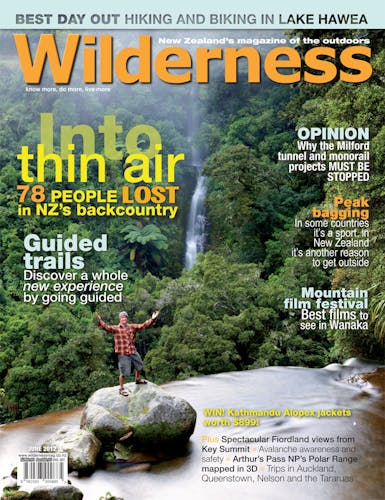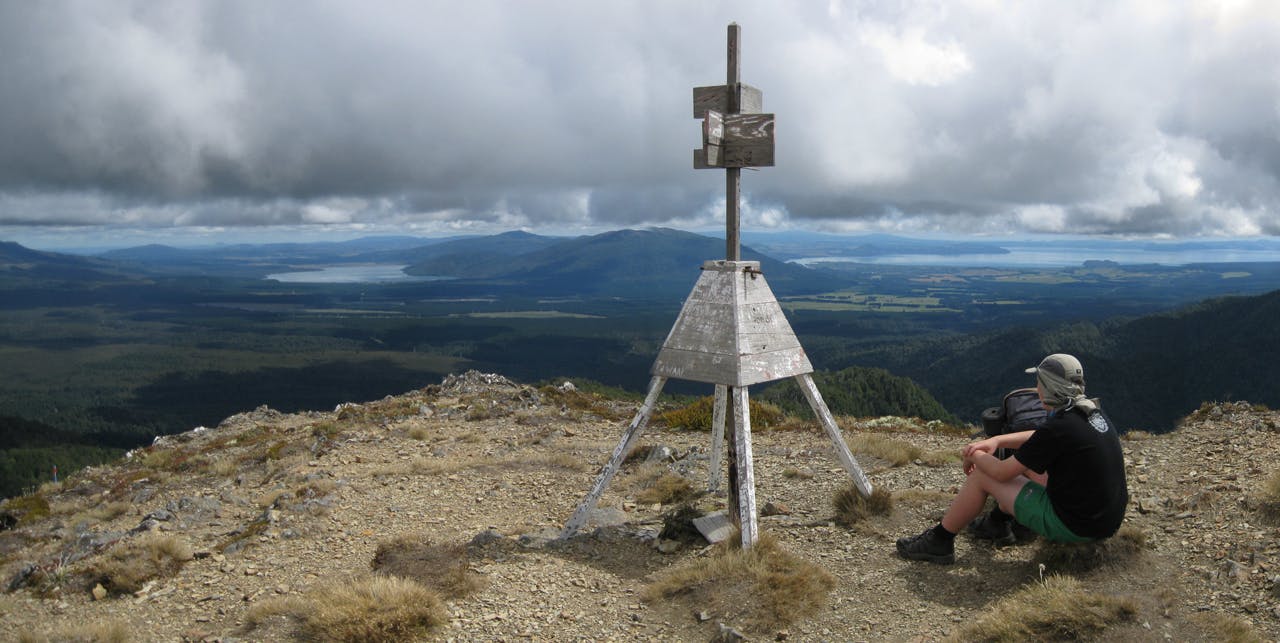People collect all sorts of things, so why not peaks? And as Edith Leigh discovers, peak bagging is great way to get outdoors and see the country
If Jon Povey hadn’t been diagnosed with cancer, the sport of peak bagging might never have got off the ground in New Zealand.
Discovering you have Hodgkin’s lymphoma at the age of 32 makes you realise life is short, he says.
The former non-outdoorsy couch potato was introduced to peak bagging in Scotland, where it is better known as Munro bagging.
Despite the not always enjoyable slog to the top, it proved to be an addictive pastime which turned him into something of a mountain goat.
“I just love the feeling of being on top of the mountain. Summits are beautiful, quiet, silent places.”
For Povey, “the Munro thing” made mountain climbing more fun. He liked the idea hundreds of other people were out there like him, collecting peaks off the list.
Munro bagging has been around for over a century and more than 4000 people have ticked off every peak in the 284-long list of Scottish mountains over 914m, or 3000ft. In fact, some people enjoy it so much, they have ‘done’ the Munro list thirteen times over.
Povey found himself wishing there was a similar list back home, but he immediately dismissed the thought as “pretty much impossible” for the average person, given the remote and rugged terrain of many of Aotearoa’s mountains.
Yet he couldn’t let go of the idea.
He walked up a few peaks close to home and began to have vague ideas of completing a list of great walking peaks in New Zealand and writing a book about it.
Then he found himself facing six months of chemotherapy.
It was the jolt he needed to stop dreaming and start doing.
Instead of writing a book, which would mean doing every peak himself and could take years, he decided to put together a list and post it online to inspire others to get out there.
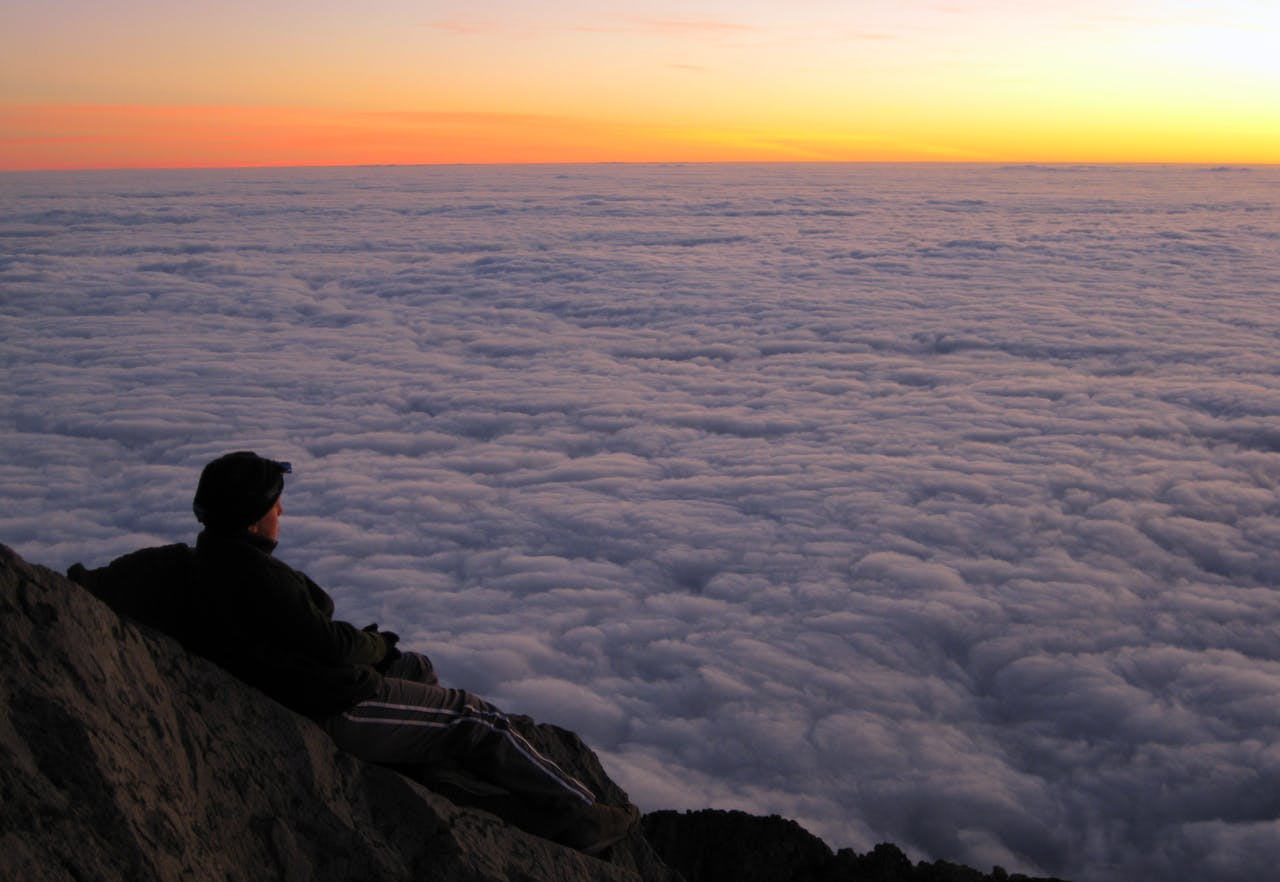
Jamie Bai enjoys a spectacular sunset before bivying the night on Mt Taranaki, in Egmont National Park. Photo: Marcus Bai
So while he wasn’t sweating it out uphill, he spent months trawling through “every single New Zealand walking book I could find, even old ones that were out of print”, browsing Department of Conservation and regional council tracks and poring over topographical maps.
Povey didn’t want just any old peaks on his list, and, unlike most other lists, he wasn’t choosing mountains by their height.
Instead, he searched out peaks that were accessible and would “actually be places people want to go to”.
He wanted his list to be achievable for anybody, no matter their age or if they were recovering from illness. The peak had to have an existing track to the top and should not need specialised mountaineering equipment, such as ice axe and crampons, to reach the summit during summer.
Another major factor defining the list was that the summit had to be rewarding, whether it was the fabulous views, the fact it was famous landmark or had some element of history or culture.
“On some peaks you barely know you are on a summit,” he says. “I didn’t want hundreds of peaks on a list that really aren’t that exciting, it dilutes the reward.”
The website, peakbagging.org.nz, was launched in 2008 and is “totally a labour of love”, says Povey.
It is an interactive site which encourages people to get involved, with leaderboards and forums, and even to add to the list themselves.
The site is free to join and has more than 400 members and more than 200 Facebook followers.
Self-described “peak bagging junky” and avid alpine climber Marcus Bai says peak bagging in New Zealand is a wonderful idea.
Bai stumbled across the peak bagging website while searching for information about a seldom climbed peak.
Although he is a passionate alpine climber, he noticed there were “a lot of little peaks around the place” that he hadn’t done.
Better known online as GuanoGerbil, he is now the top peak bagger on the site and has bagged 60 summits from the 117-long list.
“I enjoy the small ones as much as the big ones,” says Bai. “They don’t always have to be big mountains with snow on them.
“It is more just about getting out there and doing it. It’s not about the numbers for me, because I’m out there doing it anyway.”
The 47-year-old says he is out every weekend – and often during the week as well – walking, climbing and running in the mountains, but it was the peak bagging list that encouraged him to visit new parts of the country he wouldn’t normally go to.
On a recent visit to Northland he was “absolutely stunned at how beautiful it was”.
“There are some really nice peaks I didn’t know about,” he says. “They’re great exercise and I enjoyed bagging a few in quick succession last summer to top up my fitness levels for climbing the even bigger peaks down south.”
Now that he is running out of official peak bagging peaks to do within easy driving distance of his hometown of Hamilton, he is going back to redo some of them with his 14-year-old son Jamie, who has already ticked off 26 peaks himself.
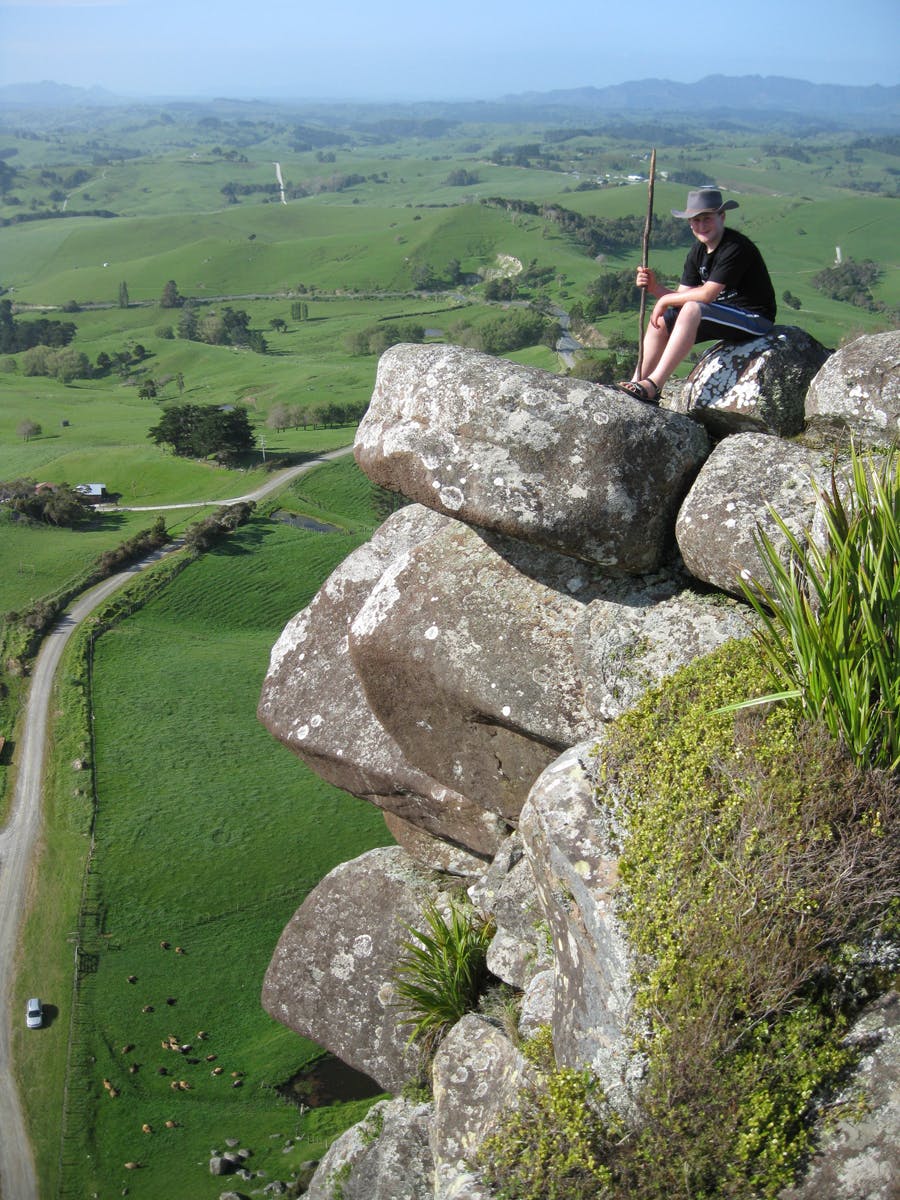
Maungarago trig in Northland isn’t on the official peak bagging list yet, but Bai reckons it should be as it is an “awesome little peak” to do. Photo: Marcus Bai
As none of the peaks are technically difficult it is “a great family thing to do”, says Bai.
“You know that any peaks listed will be worth doing, and will be an enjoyable and satisfying experience.
“I tell everybody about [peak bagging]. I think it’s a fantastic idea. It encourages the average Joe to get off their backside and get out there and do stuff.”
Auckland peak bagger Craig Thomson, who has 43 peaks under his belt, describes the peak bagging website as a one-stop shop. The online forums also enable people to talk to others about what to expect, or to look at posted photos to get a pretty good idea of what they are up for.
For Thomson, peak bagging is a way to keep fit and involve the whole family. His 13-year-old twin daughters have been coming with him since they were eight.
The love of the outdoors they developed has extended to trail running and they recently became the youngest people to complete the 75km Hillary trail in a day.
Thomson is convinced all the peaks they have tramped gave them the mental and physical toughness they needed to run and hike non-stop for 20 hours.
Thomson also came across the peak bagging site by accident and when he first started ticking peaks off the list, he and his wife Mel were out in the hills every second weekend.
For Povey, motivating people like this is exactly what he set out to achieve: “It’s a constant mixture of satisfaction and surprise that people are so into it.”
The now 37-year-old, who has been cleared of cancer, has once again been slowed down a little by the arrival of his first baby six months ago.
Getting into the hills isn’t so easy any more and he feels a little guilty he can’t spend more time making the site better, he says.
However, one of the most common criticisms he gets from some people is that the peaks are too small to be considered mountains.
As he points out, there is already a list of New Zealand mountains based on topographical merit, created by the New Zealand Alpine Club. That list includes 856 mountains, all over 1400m, a height that was chosen to exclude peaks that do not extend above the bushline.
Many of the mountains on this list are difficult and remote, and 71 of them are over 2500m. In 1991, the alpine club also compiled a list of 100 great peaks to celebrate their centenary.
Passionate alpine climber Don French has been picking off this list for the past 21 years and is just five peaks short of finishing all 100.
This epic feat began with a rash statement – “I will climb the list” – made when he was trapped in St Winifreds Hut by bad weather.
However, French says it isn’t really about ticking off the list. In fact, he isn’t even looking forward to finishing it.
Rather, he says it’s “a motivational thing”. The list helps him focus on what he wants to achieve and if bad weather or circumstances conspire against climbing a planned peak, instead of letting it ruin the weekend he can look to the list and say “here’s a folder full of research” on this peak, let’s do that instead.
The alpine club’s 100 peaks challenge does not represent the 100 highest peaks, or even the 100 greatest, or 100 classic New Zealand mountains, says 53-year-old French. Rather it is a “carefully selected and thought out list, designed to encourage participation in mountaineering at all levels”.
It includes easier peaks and many North Island peaks, which may not be that significant on a national scale, but are achievable in a weekend, or long weekend, for people living in the major centres.
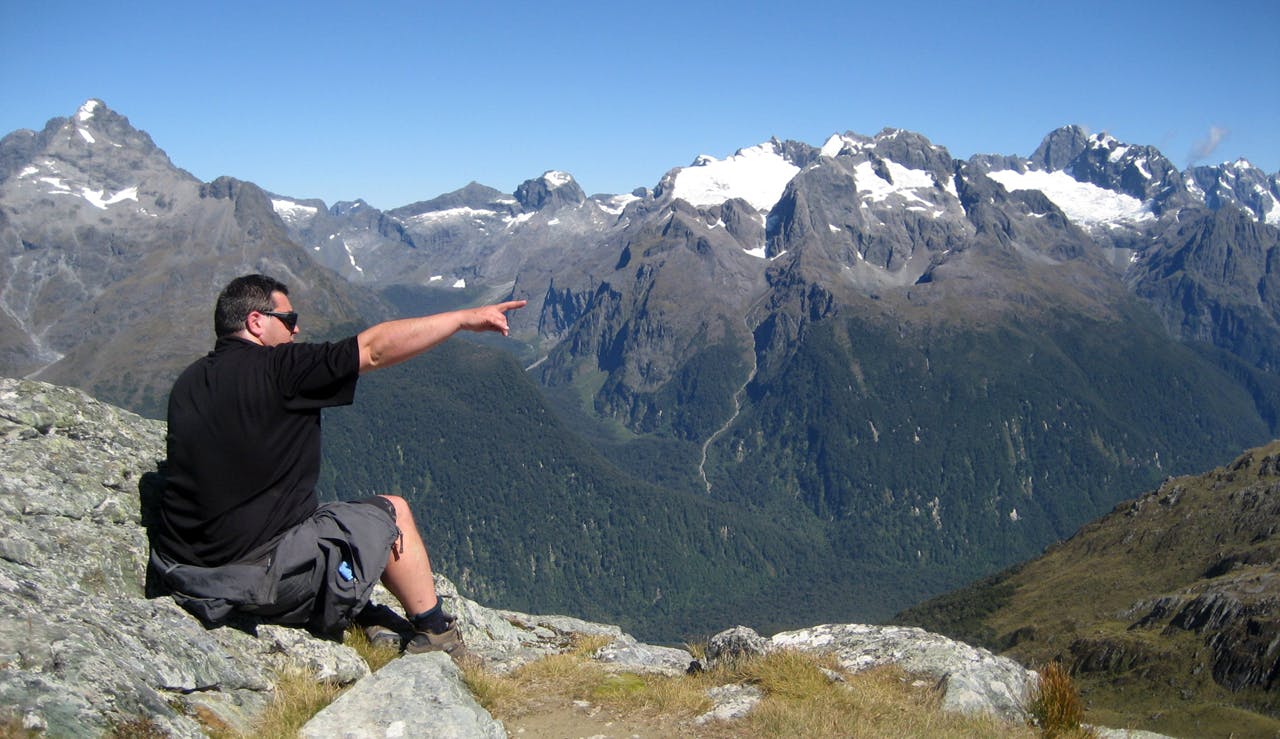
New Zealand peak bagging instigator Jon Povey enjoys the top of Conical Hill, off the Routeburn Track in Fiordland. Photo: Julia Becker
When it comes to actually getting outdoors and doing stuff, having a list works, says French.
For walkers and trampers, the peak bagging site presently has 87 peaks on its official list and 30 on its unofficial list.
Povey explains the unofficial list includes peaks which might qualify for the list, but have not yet been suitably researched and written up for him to be confident of sending someone off to climb it.
For those that like challenges there is a New Zealand first waiting to be had – to be the first person to bag all the peaks on the list.
After all, if more than 4000 people can climb all 284 Munros in Scotland, surely at least one person in a country famed for its outdoors life can manage 117.
The top seven most bagged peaks in the North Island
Mt Maunganui, Tauranga
This 232m extinct volcanic cone at one of New Zealand’s busiest holiday hot spots is a great introduction to peak bagging.
Time 1-2hr return
Distance 3.8km
Grade Easy
Rangitoto, Auckland
At only 259m with a gentle approach to the summit, many might not rate this Auckland landmark, but the lava flows and caves on show, and NZ’s largest pohutakawa forest make it a must on the peak bagging list.
Time 2-5hr return
Distance 4.6km
Grade Easy
The Pinnacles, Coromandel
This 749m peak offers interesting history, a precarious summit and a good introduction to tramping, with a tricky section of ladders at the end of the track. Its proximity to Auckland, Hamilton and Tauranga make this an excellent weekend peak bagging trip for nearly half of New Zealand’s population.
Time 5-7hr return
Distance 10km
Grade Medium
Mt Tongariro, Tongariro National Park
The Tongariro Alpine Crossing isn’t one of New Zealand’s most popular tramps for nothing and bagging 1967m Mt Tongariro along the way makes it even better. The trip to the summit passes the Red Crater, Blue Lake and North Crater.
Time 9hr one way
Distance 20km
Grade Hard
Best season December to April
Mt Ngauruhoe, Tongariro National Park
The North Island’s third highest peak, at 2,287m, featured in Peter Jackson’s Lord of the Rings film as Mt Doom. While you are likely to have a lot of company on a fine summer’s day it’s not a trip to be taken lightly. Steep scree slopes and alpine conditions make the summit a challenging but rewarding day tramp.
Time 7-8hr return
Distance 13.5km
Grade Hard
Mt Ruapehu, Central Plateau
This 2797m active volcano is the North Island’s highest mountain. It erupted in 1995 and 1996 and there was a Crater Lake break-out lahar in 2007. Tahurangi summit is the highest point, but for trampers to bag Mt Ruapehu the 2672m Dome Summit is the goal. The tramp to Dome Summit is an unmarked route.
Time 5-7hr return (although it is likely to be a lot longer as you zigzag around and over rocks)
Distance 5.6km
Grade Hard
Best season December to April
Mt Taranaki, Egmont National Park
This dormant volcano is the North Island’s second highest peak at 2,518m and gives spectacular views from the summit.
Time 8-10hr return
Distance 11.7km
Grade Hard
Best season December to April
The South Island’s top five most bagged peaks
Avalanche Peak, Arthur’s Pass
The 1833m summit gives views of Mt Rolleston and other surrounding mountains of the Southern Alps. This very steep and exposed peak is not a climb to be taken lightly.
Time 6-8hr return
Distance 6.2km
Grade Hard
Best season Summer and autumn
Mt Robert, Nelson Lakes National Park
Mt Robert rises steeply from Lake Rotoiti to 1421m. The five hour daywalk which circuits the mountain’s flanks offers incredible views and passes a number of cute little huts and shelters.
Time 5hr loop
Distance 7.2km
Grade Medium
Botanical Hill, Nelson
At only 147m, tiny Botanical Hill is one of the smallest peaks on the list, but it does have a peculiar claim to fame in that it is the geographical centre of NZ.
Time 1hr return
Distance 1.6km
Grade Easy
Mt Isobel, Hanmer Springs
Perhaps the most enticing aspect of 1319m Mt Isobel is rewarding yourself after a four hour hike with a long soak in the thermal hotpools.
Time 4hr return
Distance 9.8km
Grade Medium
Key Summit, Fiordland
Tarns, alpine wetland and views of the Darran Mountains and down the Hollyford Valley are the reward at the top of 918m Key Summit, from the Routeburn Track.
Time 3hr return
Distance 6.4km
Grade Medium





